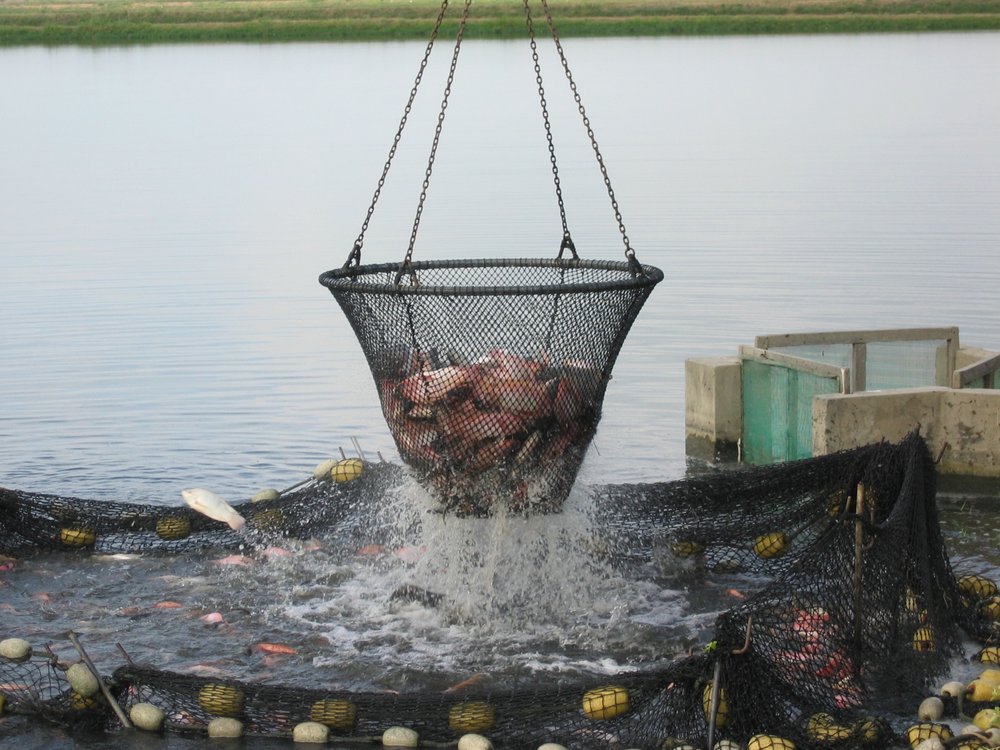Possible environmental damages of tilapia farming

The environmentalists’ concerns for tilapia farming is nothing new as the topic is being debated over the past few decades across the globe. However, the recent controversial decisions made regarding farming and importing tilapia in and to Iran has turned it into hot topic in Iran’s environmental circles.
What is tilapia?
Tilapia is the common name for nearly a hundred species of cichlid fish. Native to lakes in Africa, tilapia is mainly freshwater fish residing in shallow streams, ponds, rivers and lakes.
This versatile warm-water fish is known in the food business as “aquatic chicken” because of its easy breeding and bland taste. Tilapia happily eats pellets made largely of corn and soy and gains weight rapidly, easily converting a diet that resembles cheap chicken feed into low-cost seafood.
As far as nutritional value of this species is concerned, it should be said that like all other fish, tilapia is a good source of protein, with few of the unhealthy saturated fats in red meats.
However, it contains lower omega-3 fatty acids comparing to other fish in the market. While a portion of tilapia has 135 milligrams of omega-3 fatty acids, a portion of salmon has over 2,000 milligrams. And farmed tilapia may have even less than wild tilapia because fish acquire omega-3s by eating aquatic plants and other fish.
Also, the amount of omega-6 acids in tilapia outnumbers the beneficial omega-3s by a factor of 2 to 1, which some nutrition experts believe that this ratio can increase the risk of heart disease.
The environmental side
Generally, fish farms are notorious for having adverse effects on the environment because if the farm fish escape their pens, water pollution and spread of disease to wild fish can be expected and tilapia is not an exception.
Tilapia is one of the most invasive species known and it’s really hard to get rid of them once they are established. The aggressive breeding and feeding of the fish can squeeze out native fish and plant species in lakes, hence, they are considered a true danger for ecosystems.
The case of Lake Apoyo in Nicaragua
“One small cage screwed up the entire lake — the entire lake!” highlights Jeffrey K. McCrary in a paper published in 2007 in the Environmental Biology of Fishes journal. He has spent many years studying how a small, short-lived tilapia farm degraded Lake Apoyo in Nicaragua.
Waste from the cages polluted the pristine ecosystem, and some tilapia escaped. An aquatic plant called charra, an important food for fish, disappeared, leaving the lake a wasteland. Some species of plants and fish are slowly recovering, but others are probably gone forever, said McCrary.
The import ban of tilapia combined with the desire of officials for supporting domestic production and raising employment may pave the way for granting further permissions for developing tilapia farms. Such farms have positive economic advantages in the short run but damaging ecosystems certainly has far more negative social and economic effects in the long run.
Tilapia in Iran
The first permission for importing tilapia was issued in 2008 by the Department of Environment.
Although the department had resisted to give permit for tilapia farming projects, it seems that the new chief of environment, Isa Kalantari, is showing the green light for that because of its economic advantages.
However, the head of Iran’s Fisheries Organization Hassan Salehi issued the import ban of tilapia on January 21 to support the domestic fish farmers.
Meanwhile the Department of Environment has granted the permit for limited tilapia farming in Bafgh, a city in central province of Yazd. “There is no fresh water resource within radius of 500 kilometers,” said caretaker for natural environment directorate at the Department of Environment Hamid Zohrabi, emphasizing that this is an experimental and very strict farming plan.
Iranian experts deeply concerned
The effects of tilapia in ecosystems has various social, economic and environmental aspects, Eskannews quoted Asghar Abdoli as saying.
The penetration of tilapia in lakes influences the vegetation and can even destroy many of them, continued the professor of ecology.
He went on to say that another detrimental effect of tilapia would be in the water quality of dams. If tilapia enters these resources and starts its extensive breeding, the nutrients’ level of the water will increase resulting in significant growth of phytoplankton which will make the water unusable for drinking and other uses.
Unfortunately, tilapia has been able to enter Shadegan and Hour-al-Azim wetlands and Karun River in southwestern Khuzestan province due to illegal tilapia farming in the region. “Their presence has resulted in decreasing the population of some native fish species and even pushes them to the border of extinction,” added Abdoli.
Many developed countries have tilapia farms but they offer very strict regulations which tries to minimize their detrimental effects on the environment. Also, they follow special practices in this regard like using closed recirculating tank systems, which alleviate problems of water pollution and fish escapes.
The import ban of tilapia combined with the desire of officials for supporting domestic production and raising employment may pave the way for granting further permissions for developing tilapia farms. Such farms have positive economic advantages in the short run but damaging ecosystems certainly has far more negative social and economic effects in the long run.
MAH/MQ/MG
